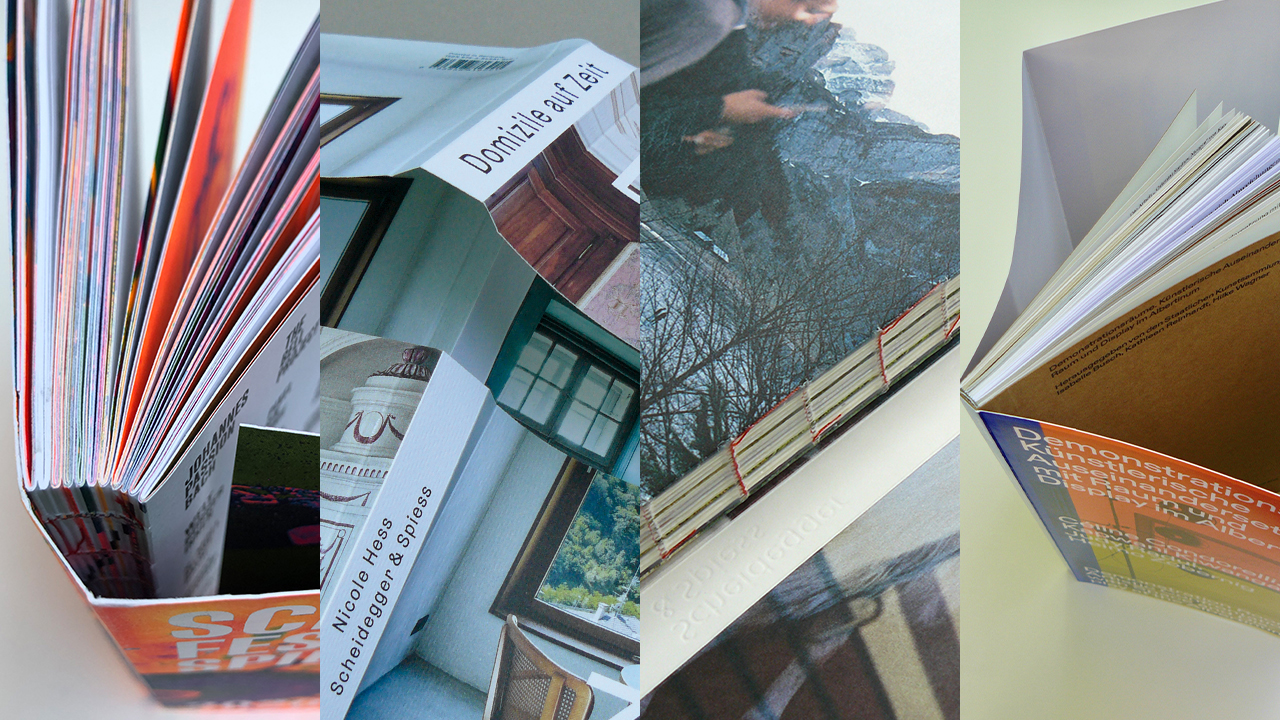Nothing makes a travel guide more noble and attractive than a cover with folded-in flaps glued to the book block with the most important information about the country as well as a few tips for excursions and culinary specialties. Flaps can also be ideally used as bookmarks. It's no wonder that the trend towards gatefold brochures, with which many publishers want to differentiate and set themselves apart from market competitors, is continuing unabated. However, in order to produce these economically in a single pass, a powerful front trimming unit is required – such as the FA 650 from Muller Martini.
Traditionally, a gatefolded brochure, also known as a French brochure or wide gatefolded brochure, is produced in two passes on the perfect binding line.
- In the first pass, gathering, (segment) gluing and front trimming take place.
- In the second pass, the block is fed and milled, the spine and pages are glued again, and the cover with flaps is also fed before the head and foot trimming takes place.
This long production time not only results in higher costs, but depending on the type and application of glue in the first pass, the perfect binder also has to be cleaned.
Only one pass with the FA 650
However, there is a way to produce gatefolded brochures much faster – i.e. in a single pass – and therefore more economically: with the FA 650 front trimming unit from Muller Martini.
The FA 650 front trimming unit trims gatefolded brochures with flaps already inserted in the performance range of 4000 cycles per hour in "normal operation" or a maximum of 6000 products fed per hour when trimming two products in one cycle (3000 cuts per hour, maximum spine length 230 mm). It can be used as a solo machine or inline and then also in through-feed mode (without front trim). The products are transported lying down and with the product spine to the right for infeed and outfeed.
 Cover caps make softcover products more noble and attractive.
How to retrofit your softcover line
Cover caps make softcover products more noble and attractive.
How to retrofit your softcover line
The FA 650 can be upgrades at two points on an existing softcover line.
- Either after the three-knife trimmer: this is easier in terms of installation because the existing machines remain in place and only the compensating stacker has to be moved during production changes from booklet to gatefold.
- Or between the perfect binder and the three-knife trimmer: In this case, the three-knife trimmer has to be moved once, but production is easier afterwards. For brochures without flaps, the FA 650, with its fast makeready times and high trim quality, runs at maximum speed on the perfect binder line in through-feed mode.
Economic and ecological advantages
The use of a front trim unit not only has economic advantages due to the more economical production, but also ecological ones. This is because significantly less glue is required and, thanks to production in a single pass, also less electricity.
There are three variants for attaching cover flaps: rear and front, front only or rear only. It is also possible to produce piles with loose sheets – for example for spiral binding, where the sheets still have to be punched. In this case, the stacks must be removed by hand after the three-knife trimmer.
Do you have any questions about gatefolded brochures in general or the FA 650 front trimming unit in particular? Then please feel free to contact me (lukas.budde@de.mullermartini.com) at any time. We will be happy to demonstrate our technology and the advantages of the FA 650 live in our training center or online.
Your
Lukas Budde,
Product Manager Softcover, Muller Martini
On the subject of gatefolded brochures, you can also read on the Muller Martini website the interesting blog
"On the flap, ready, go...!" by Frank Baier, Editor-in-Chief of "Bindereport", from March 16, 2021.